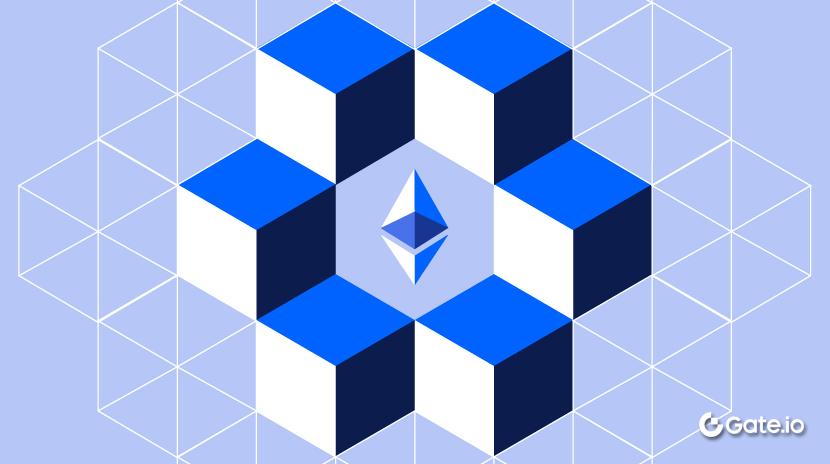Reforma de la Fundación Ethereum en curso: ¿Responderá el mercado?
Durante este ciclo de mercado, el rendimiento de Ethereum ha quedado por debajo de las expectativas. Como líder entre las altcoins, Ethereum no solo ha permanecido lento a pesar de que Bitcoin alcanzó
nuevos máximos históricos, pero también se enfrenta al estancamiento en el desarrollo de los ecosistemas, ya que carece de nuevas narrativas, pierde impulso frente a competidores como Solana y se enfrenta a controversias como las "cadenas fantasma" de la capa 2.
A medida que estos problemas siguen escalando, la insatisfacción de la comunidad se ha intensificado, convirtiendo a la Fundación Ethereum (EF) en el blanco de las críticas. La salida de varios desarrolladores principales y las críticas públicas a la EF han reforzado aún más la percepción de una mala gestión interna. En respuesta, la EF finalmente ha tomado medidas: tras un comunicado del cofundador Vitalik Buterin anunciando 'una reestructuración importante del liderazgo de la EF', la fundación ha lanzado una serie de iniciativas, incluida la asignación de 50,000 ETH de su tesorería para apoyar el ecosistema DeFi y la contratación de gerentes de redes sociales para mejorar la comunicación con la comunidad.
Este artículo proporcionará un análisis en profundidad del estado actual de la Fundación Ethereum, centrándose en su papel, participación en el ecosistema, estructura organizativa, utilización de fondos y controversias en torno a las ventas de ETH. Además, explorará los desafíos más amplios a los que se enfrenta actualmente Ethereum.
Controversias clave: Ineficiencia, Venta de ETH y Falta de Transparencia
Desde su establecimiento en 2014, la Fundación Ethereum ha desempeñado un papel insustituible en el desarrollo del ecosistema de Ethereum. Sin embargo, en los últimos años, su reputación en el mercado ha disminuido constantemente debido a problemas como un equipo de liderazgo inaccesible, ineficiencias internas y falta de transparencia financiera. De particular preocupación es la venta periódica de ETH por parte de la EF, lo que ha inquietado a los titulares de tokens, muchos de los cuales creen que las acciones de la EF contribuyen directamente a las caídas de precios. Las siguientes secciones ofrecen un análisis más profundo.
Falta de transparencia
Los problemas de transparencia de EEF giran principalmente en torno a los gastos del tesoro y la toma de decisiones interna.
En el lado del tesoro, si bien la EF ha comenzado gradualmente a revelar algunos detalles de financiamiento, como subvenciones trimestrales del Programa de Apoyo al Ecosistema (ESP) y resúmenes de gastos anuales para diferentes iniciativas, el nivel de divulgación sigue siendo insuficiente.

Origen: esp.ethereum.foundation
Por ejemplo, el programa ESP, diseñado para financiar proyectos de ecosistemas a través de subvenciones y otro tipo de apoyo, patrocinó 397 proyectos en 2022 con un gasto total de $30 millones. En 2023, aumentó a 498 proyectos con un total de $61.1 millones. Desde su inicio en 2014, el programa ha gastado un total acumulado de $44.39 millones en diversos ámbitos, incluyendo la participación comunitaria, la educación, el desarrollo de capas de consenso, pruebas de conocimiento cero y herramientas para desarrolladores. Sin embargo, EF solo ha revelado los nombres de los proyectos patrocinados sin revelar las cantidades exactas de las subvenciones o proporcionar actualizaciones de seguimiento sobre el progreso de los proyectos.
En lo que respecta a la toma de decisiones internas, la transparencia de la EF es igualmente cuestionable. Tomando la financiación de proyectos como ejemplo, la EF aún no ha publicado criterios de selección claros ni pautas detalladas de financiación. Esta dependencia de un pequeño grupo de tomadores de decisiones para evaluaciones subjetivas plantea preocupaciones sobre la asignación injusta de recursos y oportunidades perdidas para proyectos con alto potencial.
Ineficiencia en la Ejecución y Utilización de Fondos
A mediados de enero, el desarrollador temprano de Ethereum Eric (@econoaranunció su partida de EF, criticando los procesos engorrosos de la fundación, que requieren un tiempo y esfuerzo excesivos, así como la desconexión de los líderes con la comunidad en general.
Según el informe anual de EF de 2024, la fundación se compone de más de 20 equipos independientes, incluyendo el Grupo de Incentivos Robustos (RIG), Geth, el Grupo de Investigación Aplicada (ARG) y el equipo de Consenso I+D, cada uno enfocado en diferentes áreas de investigación. Sin embargo, EF no ha revelado las estructuras internas ni los flujos operativos de estos equipos. Este modelo comunitario poco estructurado conlleva inevitablemente a ineficiencias en comparación con una estructura corporativa.
Además, los gastos masivos de EF también han recibido críticas. Los informes muestran que el gasto anual de EF fue de $105 millones en 2022, aumentando a $134 millones en 2023. Los gastos internos aumentaron del 36.2% al 37.2% del presupuesto total, sumando $12 millones, mientras que los gastos externos aumentaron en $17.5 millones. Aunque la mayoría de estos fondos se destinaron al desarrollo comunitario, financiamiento de proyectos e investigación técnica, la escala de los gastos ha superado las expectativas de la comunidad.

Fuente: ethereum.foundation
Debido a esto, muchos dentro de la comunidad han pedido a EF que reduzca significativamente su presupuesto. El fundador de Aave, Stani Kulechov, ha sugerido mejoras como ralentizar el gasto, reducir el personal y establecer un modelo de ingresos sostenible. Mientras tanto, Anthony D’Onofrio, miembro fundador de Ethereum, ha hecho hincapié en la necesidad de responsabilidad financiera para garantizar resultados medibles de los gastos de EF.
Controversia por la venta de ETH
Debido a la transparencia de la cadena de bloques, las transacciones en cadena de EF son muy visibles. Durante mucho tiempo, las ventas de ETH de la fundación se han visto como una señal de los máximos del mercado, lo que le ha valido a EF el apodo de "maestro de vender en el pico".
Sin embargo, un análisis de las ventas históricas de EF en comparación con las tendencias de precios de ETH sugiere que la supuesta capacidad de EF para "cronometrar el mercado" es probablemente coincidente en lugar de un indicador confiable de los máximos del mercado. Si bien las grandes ventas de EF a menudo crean volatilidad a corto plazo en el mercado, no son necesariamente el factor decisivo detrás de las caídas sostenidas de los precios de ETH.
EF ha justificado sus ventas periódicas de ETH afirmando que son necesarias para garantizar operaciones a largo plazo y mantener reservas suficientes de dinero fiduciario para cubrir gastos durante mercados bajistas.

Fuente: intel.arkm.com
A fecha de 23 de febrero de 2025, EF tiene aproximadamente $681 millones en criptomonedas en su tesorería, con un 99.98% en ETH, equivalente a aproximadamente un 0.2% del suministro total de ETH. Además, EF tiene $180 millones en inversiones y activos no criptográficos.
De hecho, abordar estas controversias es mucho más complejo de lo que parece. Se derivan de problemas estructurales más profundos, como el modelo organizativo ambiguo de EF, la definición de roles poco clara, los conflictos entre la visión a largo plazo y las realidades a corto plazo, y los desafíos más amplios que enfrenta el ecosistema de Ethereum. Resolver estos problemas requiere reformas internas de EF y los esfuerzos colectivos de la comunidad de Ethereum.
Entidad similar a una empresa vs. Organización comunitaria
EF exhibe una paradoja única en su modelo operativo. Desde su creación en 2014, se ha comprometido con la descentralización, afirmando que no es ni una empresa ni una organización sin ánimo de lucro tradicional. Sin embargo, en la práctica, EF opera más como una entidad centralizada, con una jerarquía estructurada que incluye gerencia, líderes de equipo, investigadores, desarrolladores y miembros de la comunidad. Un pequeño grupo de tomadores de decisiones tiene un control absoluto sobre los fondos del tesoro, los recursos del ecosistema y la dirección del desarrollo.
Esta estructura ambigua ha desconcertado a algunos miembros de la comunidad. Muchos creen que un modelo empresarial produciría una mayor eficiencia y beneficios económicos, mientras que una estructura de comunidad laxamente organizada carece de responsabilidad y perjudica la sostenibilidad a largo plazo. La falta de aprobación general de la comunidad para los tomadores de decisiones clave también ha exacerbado los problemas de confianza.
Aya Miyaguchi, actual directora ejecutiva de EF, dirigió anteriormente las operaciones de Kraken en Japón. Desde que asumió su cargo en 2018, se ha enfrentado a una inmensa presión por parte de la comunidad, con continuos pedidos de renuncia e incluso declaraciones extremas como "Maten a Aya".
En respuesta, Vitalik Buterin condenó públicamente tales comentarios, calificándolos de "pura maldad". También dejó claro que "Soy el único tomador de decisiones cuando se trata del equipo directivo de la Fundación Ethereum." Además, afirmó: "Estás reduciendo activamente mi interés en hacer lo que quieres."
Estas aparentemente autoritarias observaciones han vuelto a desatar una amplia controversia dentro de la comunidad. Como cofundador y líder espiritual de Ethereum, las palabras y acciones de Vitalik son consideradas una fuerza orientadora por los miembros de la comunidad. Si bien él aboga enérgicamente por una gobernanza descentralizada y ha enfatizado que 'si Ethereum se convierte en una empresa, perderá la mayor parte de su significado', la ausencia de un marco de gobernanza claro y regulaciones significa que este enfoque caótico pero centralizado en la toma de decisiones probablemente persistirá en el futuro previsible.
Visión a largo plazo vs. Objetivos a corto y medio plazo
EF se posiciona como coordinador del ecosistema de Ethereum, asignando recursos para apoyar proyectos clave y fomentando su desarrollo como pilares fundamentales del ecosistema. Al mismo tiempo, EF promueve activamente Ethereum externamente y se esfuerza por su adopción a gran escala, con el objetivo final de realizar Ethereum como el “ordenador definitivo del mundo.”
Como parte de esta visión, EF se adhiere a tres valores fundamentales: pensamiento a largo plazo, minimalismo y gestión del valor. Esta perspectiva también explica por qué EF prioriza la iteración tecnológica y el valor social sobre las ganancias económicas a corto plazo o medidas convencionales de éxito y acumulación de poder.
Sin embargo, esta visión idealista a largo plazo ha creado una desconexión significativa con las demandas inmediatas del mercado. El cofundador de Solana, Anatoly Yakovenko, ha señalado que el mayor desafío de Ethereum radica en la incertidumbre a largo plazo de la Disponibilidad de Datos (DA) y las perspectivas poco claras de ETH como "dinero ultrasónico".
Además, en un esfuerzo por mantener su visión a largo plazo, EF ha mantenido consistentemente la neutralidad en asuntos técnicos, políticos y de gobernanza. Si bien esta estrategia le ha ayudado a evitar controversias innecesarias, también ha llevado a perder oportunidades para asegurar recursos y ventajas de ser el primero en moverse. En momentos de crisis dentro del ecosistema de Ethereum, EF puede necesitar salir de detrás de bastidores y asumir un papel más proactivo, manteniéndose fiel a los principios fundamentales de Ethereum, para guiar y promover el progreso del ecosistema.
Objetivos y medidas de reforma
En respuesta a las controversias en torno a EF, Vitalik Buterin ha delineado una serie de reformas a gran escala destinadas a lograr los siguientes objetivos:

Fuente: @VitalikButerin
- Mejorando la experiencia técnica del equipo directivo de EF.
- Mejorar la comunicación bidireccional entre el liderazgo de EF y los participantes del ecosistema, incluidos los nuevos y existentes interesados como usuarios individuales e institucionales, desarrolladores de aplicaciones, proveedores de carteras y soluciones de Capa 2 (L2).
- Reclutar nuevos talentos para aumentar la capacidad de ejecución y eficiencia.
- Apoyando activamente a los desarrolladores de aplicaciones mientras se asegura que se respeten los valores fundamentales y los derechos inalienables, especialmente la privacidad, los principios de código abierto y la resistencia a la censura, en la capa de aplicación.
- Expansión de la descentralización, tecnologías de privacidad y uso en la cadena de bloques de Ethereum, incluidas aplicaciones en pagos y gestión de activos.
Al mismo tiempo, también dejó claro que ciertos principios permanecerán inalterados. Estos incluyen: no habrá un cambio ideológico; EF no presionará activamente a las agencias regulatorias o a figuras políticas influyentes, especialmente en los Estados Unidos, pero también en cualquier país importante con el riesgo de comprometer el estatus de Ethereum como una plataforma neutral a nivel mundial; EF no se convertirá en un campo de batalla para intereses creados; ni evolucionará hacia una organización altamente centralizada ni se posicionará como el “actor principal” de Ethereum.
Además de estos cambios estratégicos, EF ya ha comenzado a implementar cambios. Las actualizaciones recientes indican que EF está contratando gerentes de redes sociales y personal de participación comunitaria para fortalecer su participación directa en el ecosistema. Además, EF ha asignado 50,000 ETH de su tesorería para apoyar el ecosistema DeFi. A mediados de febrero, desplegó 10,000 ETH en Spark, 10,000 ETH en Aave Prime, 20,800 ETH en Aave Core y 4,200 ETH en Compound, con iniciativas adicionales de participación en consideración.
Es notable que Vitalik y EF también hayan invertido en una empresa llamada Etherealize, que tiene como objetivo promover la adopción de Ethereum en Wall Street. Informes indican que Danny Ryan, un antiguo investigador de EF que renunció en septiembre del año pasado, se ha unido a Etherealize como cofundador. Estos desarrollos resaltan la determinación de Vitalik y EF de superar los desafíos actuales, pero si el mercado responderá favorablemente sigue siendo incierto.
Desafíos enfrentados por Ethereum
Si bien las controversias de EF pueden calmarse temporalmente, en su mayoría han servido como una salida para la frustración de la comunidad por el precio estancado de ETH y el lento progreso del ecosistema. El verdadero problema que requiere soluciones urgentes es Ethereum mismo.
Narrativa débil
El ecosistema de Ethereum ha alcanzado un punto muerto, con métricas clave on-chain, como las tarifas de gas, direcciones activas y recuentos de transacciones diarias, mostrando poco crecimiento significativo en el último año. Si bien narrativas como la actualización de Dencun, las aprobaciones de ETF de spot y el restakeo han sido muy esperadas, las reacciones del mercado han sido tibias. Por ejemplo, a partir del 21 de febrero de 2025, los ETF de spot de Bitcoin en EE. UU. habían registrado entradas netas acumulativas de 39.56 mil millones de dólares, mientras que los ETF de spot de Ethereum solo habían atraído 3.15 mil millones de dólares, un contraste marcado.
Según la hoja de ruta de Ethereum, el próximo hito importante es la actualización de Pectra, programada para el 8 de abril. Como una de las actualizaciones más extensas en la historia de Ethereum, Pectra incluirá hasta 20 Propuestas de Mejora de Ethereum (EIP) destinadas a mejorar la experiencia del usuario, aumentar la capacidad de bloques L2 y mejorar la escalabilidad.
Competencia de Solana y otras Cadenas Públicas
El auge de Solana, SUI y otras blockchains públicas competidoras plantea una amenaza significativa para Ethereum. Solana, en particular, ha dominado la fiebre de las MEMECOIN, aprovechando sus transacciones rápidas y sus bajas comisiones para lograr aumentos récord en el precio de los tokens. Además, el rápido crecimiento del ecosistema de la Máquina Virtual Solana (SVM) ha fortalecido aún más su efecto de red.
Si bien algunos partidarios de Ethereum argumentan que la popularidad de Solana probablemente no se traducirá en una base de usuarios sostenible y que su ecosistema todavía se encuentra rezagado con respecto a Ethereum, no se puede negar que el sólido rendimiento de Solana ha impactado significativamente en la liquidez y la base de usuarios de Ethereum.
Desafíos de Capa 2 (L2)
La estrategia de escalabilidad de Ethereum se ha centrado en soluciones de Capa 2, las cuales han recibido un fuerte respaldo de EF y participantes del ecosistema en los últimos años. Estas redes L2 han logrado reducir con éxito los costos de transacción y aumentar la capacidad de la red. Sin embargo, la rápida proliferación de soluciones L2 ha superado con creces la demanda del mercado, lo que ha dado lugar a una fragmentación excesiva dentro del ecosistema de Ethereum. Los usuarios y la liquidez se han dispersado en diferentes L2, impactando severamente la experiencia general del usuario.
Más críticamente, la relación entre la Capa 1 (L1) de Ethereum y sus redes L2 se ha desequilibrado. Mientras que L1 continúa "suministrando sangre" a las soluciones L2, las L2 no han devuelto el valor esperado a L1. No han generado ingresos estables a largo plazo para Ethereum ni han fortalecido la demanda de ETH como activo central del ecosistema, ya que sus modelos de incentivos de tokens independientes han debilitado la dependencia de ETH.
En respuesta, el fundador de Synthetix, Kain Warwick, ha pedido a EF que requiera a las soluciones L2 usar sus ingresos para recomprar ETH, aumentando su demanda y apoyando su valor. El fundador de Curve, Michael Egorov, ha adoptado una postura más radical, sugiriendo que EF debería abandonar por completo la estrategia L2. Incluso Vitalik Buterin ha instado públicamente a los proyectos L2 a retribuir a L1 adoptando medidas que refuercen ETH como el activo fundamental del sistema económico de Ethereum.
Resumen
Ante los desafíos internos y externos, la Fundación Ethereum (EF) busca revitalizarse a través de una serie de reformas, que incluyen mejorar la experiencia técnica de su liderazgo, fortalecer la participación de la comunidad, optimizar la eficiencia de ejecución y centrarse en el desarrollo de la capa de aplicación. Sin embargo, la EF es solo una parte del ecosistema Ethereum y no puede asumir la responsabilidad de la revitalización del ecosistema por sí sola.
El esfuerzo colectivo de todos los participantes del ecosistema es esencial para que Ethereum supere sus dificultades actuales. Solo a través de avances coordinados en tecnología, gobernanza y desarrollo del ecosistema, Ethereum puede recuperar su ventaja competitiva y reclamar su posición en la vanguardia de la industria blockchain.
Artículos relacionados

¿Qué es Tronscan y cómo puedes usarlo en 2025?

¿Cómo apostar ETH?

¿Qué es SegWit?

¿Qué es HyperGPT? Todo lo que necesitas saber sobre HGPT

¿Qué es la Billetera HOT en Telegram?


